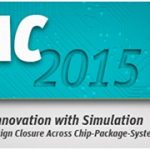Huge designs, spectacular design costs, astronomical capital expenditure. Welcome to the present day semiconductor industry. As discussed in my prior post, the days of democratized silicon access have been replaced by an elite market. Custom chips are once again a rich person’s game. Does it have to stay this way? I personally… Read More
Electronic Design Automation
A Key Partner in the Semiconductor Ecosystem
Often we hear about isolated instances of excellence from various companies in the semiconductor industry which contribute significantly in building the overall ecosystem. While the individual excellence is essential, it’s rather more important how that excellence is utilized in a larger way by the industry to create a ‘value… Read More
Custom IC Panel: Winning the Custom IC Design Race!
Back in the day, EDA companies enabled the foundries. Seriously, those pesky little foundries chased us EDA companies around like puppies who needed a walk. Now, emerging EDA and IP companies are the puppies and we chase the foundries. Solido Design Automation is one of the hardest working puppies that I have ever helped with strategic… Read More
S2C’s Virtex UltraScale Prototyping Provides Designers Much Needed Flexibility
The advent of large system-on-chip (SoC) designs has brought FPGA prototyping hardware into the limelight and the launch of S2C Inc.’s Single VU440 Prodigy Logic Module just shows how far off-the-shelf prototyping has come in a bid to complement hardware verification and software development. Hardware verification… Read More
ClioSoft Celebrates 2014 with 30% Revenue Growth!
One of the first companies we worked with when SemiWiki went live in 2011 was ClioSoft. They had a problem with a competitor spreading misinformation which is certainly not unheard of in EDA. When a company cannot compete technically sometimes they resort to dirty tricks or legal distractions. The first ClioSoft article we published… Read More
How Sidense Sees The Smart Connected Universe
Sidenserecently conducted a webinar on what they call the Smart Connected Universe. They consider the Smart Connected Universe as something that includes a collection of market segments that are both smart and connected. This casts a big net, and includes what many are calling IoT, but goes further into medical, automotive and… Read More
Analog Market Leaders Eyeing on IoT Applications
When we talk about analog IC market, one can easily guess who the leader with lion’s share in the market is. There are also next level leaders with impressive growth rates in this market. The analog market as such is poised to grow with Internet of Things (IoT) because it supplies some of the key components such as data converters, op… Read More
EDAC Game of Thrones: Bob Smith is the New Executive Director
Bob Smith has been appointed executive director of EDAC, following the retirement of Bob Gardner after nearly 20 years. Bob (Smith) was most recently the marketing and business development VP for Uniquify. However, he has been in the industry for a long time with stints at IKOS, Synopsys, LogicVision and Magma. He has even been … Read More
Design Collaboration, Requirements and IP Management at #52DAC
For SoC designers attending DAC in June you probably want to check out the EDA vendors that enable design collaboration among your engineers and designers that are spread out across a building, campus or the globe. Dassault Systemes does offer tools and methodologies for: Design collaboration, requirements and IP management.… Read More
Chip Design – Coming of Age in the Computer Age
Previously, I examined chip design in the late 1970s and early 1980s. It was a nostalgic ride – thanks to all those who shared their stories. I enjoyed reading all of them. I drew two basic conclusions in the prior post:
[LIST=1]






Quantum Computing Technologies and Challenges